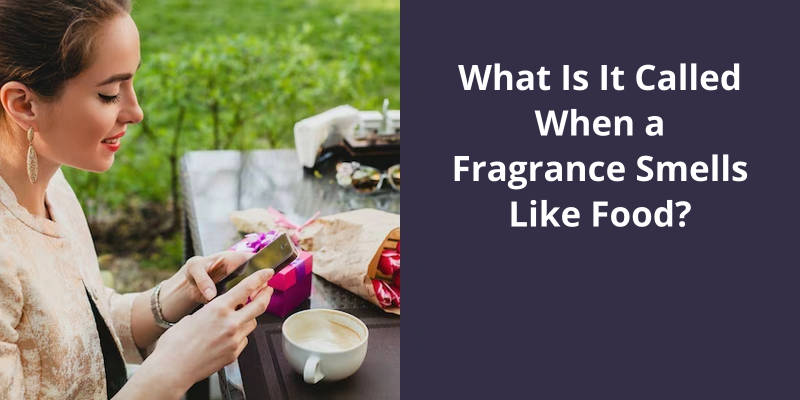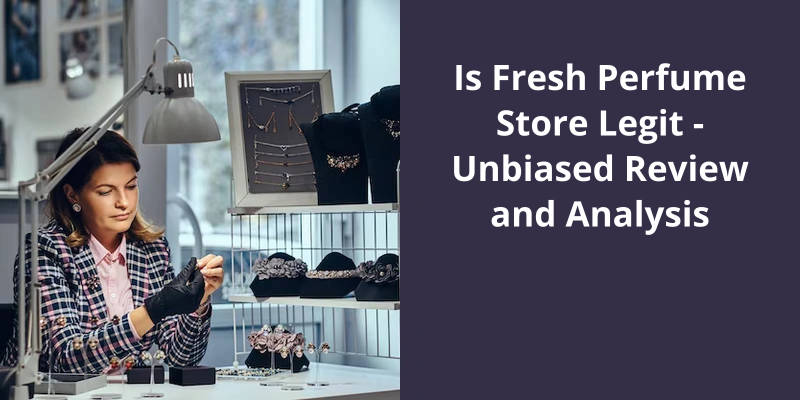When a fragrance smells like food, it is referred to as a “gourmand” scent. Gourmand fragrances are a category of perfume which features scents replicating the smell of foods or desserts. These aromas often include notes like vanilla, caramel, chocolate or even fresh-baked bread. Not limited to sweet smells, it also covers distinct savory food fragrances like coffee, spices or salted popcorn. Known for their warmth and richness, gourmand scents create a comforting and appetizing atmosphere, often evoking pleasant memories or feelings of indulgence, which is why they’re a popular choice in the world of perfumery.

What Is the Aroma of a Food Product?
The aroma of a food product is the delightful scent that wafts through the air, luring our senses and enticing our taste buds. It’s the olfactory equivalent of a mouthwatering feast, evoking memories and triggering cravings. The significance of an enticing aroma can’t be overstated, as it plays a crucial role in our perception and enjoyment of food. Akin to a symphony of fragrances, the aroma of food is composed of various volatile compounds that are released when the food is cooked or prepared.
Interestingly, the aroma of a food product is a complex interplay of volatile organic compounds, or VOCs, which are responsible for producing the scent. These VOCs are released from the food and then detected by sensory receptors in our nose, triggering a cascade of neural signals that are interpreted by our brain as a specific aroma. The composition and intensity of these VOCs can vary greatly between different food products, giving rise to the wide array of smells we associate with various types of cuisine.
Food manufacturers and chefs have long recognized the importance of aroma in the culinary experience. They carefully select ingredients and spices, often combining them in unique and creative ways, to create tantalizing aromas that enhance the overall taste and appeal of their dishes. They understand that a well-crafted aroma can heighten our anticipation, heighten our enjoyment, and even influence our perception of taste.
It’s the alluring scent that beckons us to indulge in a feast for our senses. From the intoxicating aroma of freshly brewed coffee to the mouthwatering fragrance of a sizzling steak, the aroma of food has the remarkable ability to transport us to a world of culinary delights. So next time you encounter a fragrance that reminds you of food, revel in it’s aromatic magic and savor the experience it offers.
Food perfume, a fascinating concept that combines the worlds of fragrance and culinary delights, is becoming increasingly popular. With brands like Antonella Bondi’s Food Fragrances, this innovative trend is taking off. These perfumes are unique creations that blend essential food oils with alcohol or grapeseed oil, resulting in delectable scents that aren’t only edible but also bursting with fresh and vibrant aromas. This exciting fusion of fragrance and cuisine is revolutionizing the way we experience scent and flavor.
What Is Food Perfume?
There’s a term to describe a fragrance that smells like food: gourmand. The concept of food perfume isn’t a new one, but it’s gaining popularity as a unique and indulgent way to experience the joy of food through scent.
Antonella Bondi is one of the pioneers in the world of food perfume. Her range of Food Fragrances is a testament to her passion for both food and fragrance. Each bottle is filled with a carefully crafted combination of essential food oils, designed to evoke the same mouth-watering aromas we experience when cooking or eating our favorite dishes.
What sets Antonellas Food Fragrances apart is that they aren’t just meant to be sniffed; they’re also edible. Made with a blend of alcohol or grapeseed oil, these fragrances can be spritzed directly onto food or added to drinks to enhance the flavors. Imagine a dash of truffle-scented perfume on your pasta or a spritz of vanilla-scented fragrance in your coffee – it’s a whole new way to experience food.
From the rich and decadent scents of chocolate and caramel to the zesty and refreshing notes of citrus and herbs, there’s a fragrance for every taste and occasion. These perfumes offer a sensorial journey that combines the pleasure of scent with the pleasure of taste.
With each luscious spritz or drop, you can transport yourself to a world of culinary delights. It’s a way to satisfy your cravings without the calories, creating a truly unique and pleasurable experience for the senses.
These fragrances aren’t only meant to mimic the delicious smells of food, but they’re also edible, allowing you to enhance the flavors of your favorite dishes.
A sweet gourmand scent is a fragrance that exudes the irresistible aroma of delectable treats. It’s composed of synthetic edible notes like honey, chocolate, vanilla, or candy, which are reminiscent of delightful desserts. These mouthwatering scents can be blended with non-edible base notes such as patchouli or musk to create a captivating perfume that will leave you craving more.
What Is a Sweet Gourmand Scent?
A sweet gourmand scent is a fragrance that invokes the mouthwatering aromas of delectable treats and indulgent desserts. It’s a perfume that tantalizes the senses with synthetic edible notes such as honey, chocolate, vanilla, or candy. These fragrances capture the essence of our favorite guilty pleasures and evoke a sense of comfort and nostalgia.
The top and middle notes of these fragrances are carefully blended to mimic the flavors and aromas of our favorite desserts, creating an olfactory experience that’s both irresistible and enticing.
Imagine a fragrance that smells like freshly baked cookies straight out of the oven, or like a warm piece of caramel drizzled over a scoop of vanilla ice cream. These scents evoke memories of childhood and special occasions, reminding us of the joy and happiness that comes with indulging in our favorite sweets.
It’s the perfect fragrance for those with a sweet tooth, as it allows them to enjoy the delightful scents of their favorite treats without any of the calories or guilt. The combination of edible notes with non-edible base notes such as patchouli or musk adds depth and complexity to these fragrances, elevating them from a simple dessert-inspired scent to a sophisticated and desirable perfume.
Whether you prefer the scent of chocolate, vanilla, or candy, there’s a gourmand fragrance out there that will satisfy your cravings and make you feel like a gourmand in more ways than one.
Popular Sweet Gourmand Scents on the Market
- Pink Sugar
- Prada Candy
- Gourmand Coquin
- La Vie Est Belle
- Black Opium
- Bonbon
- Ari by Ariana Grande
- Cupcake by Bath & Body Works
- Viva La Juicy
- Gourmand EDP by Van Cleef & Arpels
Source: Gourmand (fragrance) – Wikipedia
When it comes to describing the aroma of food, one can employ a plethora of descriptive adjectives. These powerful words, such as “sweet,” “musty,” “sharp,” “fragrant,” “sour,” “rich,” or “mild,” possess the ability to capture the essence and intensity of a particular scent, enabling one to paint a vivid picture of the olfactory experience.
How Do You Describe the Aroma of Food?
When it comes to describing the aroma of food, there’s a wide range of adjectives that can be used to convey the characteristics of a particular smell. These descriptive words help paint a vivid picture of the scent and give readers a sense of what they might experience. Words like “sweet” can be used to describe a fragrance that’s sugary or dessert-like notes, while “musty” can convey a damp or earthy smell associated with mushrooms or aged cheese.
Another adjective commonly used is “sharp,” which describes a pungent or tangy scent that’s a strong, intense quality. “Fragrant” is a versatile word that can be applied to delightful and pleasant-smelling foods, while “sour” is reserved for scents that have a tart or acidic quality, such as citrus fruits or vinegar.
On the other hand, “rich” is a term often used to describe the powerful, deep, and complex aromas found in dishes like heavily spiced curries or slow-cooked stews. It can imply a sense of abundance and depth within the scent. In contrast, “mild” is used to describe fragrances that are subtle, understated, or gentle in nature, such as a light floral scent or delicate herbs.
By employing these descriptive adjectives, it becomes easier to capture the essence of a foods aroma. Whether it’s the sweet and intoxicating smell of freshly baked pastries or the sharp tang of a zesty lemon, the right combination of words can bring the scent to life for readers and create an immersive experience.
In addition to the natural fragrance compounds that develop during the ripening of fruits and vegetables, the world of food is also filled with synthetic aroma compounds that serve various purposes. These compounds are used to flavor our food and beverages, create enticing aromas, and even add a warning scent to dangerous chemicals. Let’s explore the fascinating world of food fragrance and how it enhances our culinary experiences.
Does Food Have Fragrance?
Fragrances that smell like food are often referred to as gourmand fragrances. These scents aim to replicate the delicious aromas we associate with various culinary delights such as desserts, fruits, or even savory dishes.
When it comes to food, fragrance plays a crucial role in our sensory experience. We often rely on our sense of smell to determine the freshness or ripeness of certain foods. The aroma compounds responsible for these appetizing scents naturally occur during the ripening process of fruits and vegetables. They can also be found in various foods, spices, wines, oils, and essential oils, adding a delightful olfactory dimension to our culinary adventures.
In addition to naturally occurring aroma compounds, there are also synthetically developed fragrances specifically designed to flavor food. These compounds, known as food flavorings or flavor additives, are widely used in the food industry. They aim to replicate the taste and aroma of natural ingredients, allowing for consistent flavor profiles even when using artificial or processed substances.
Some aroma compounds are added to dangerous chemicals to create a distinctive and unpleasant smell, acting as a warning to prevent accidental ingestion. These compounds, often referred to as bitterants or aversive agents, are commonly used in household cleaning products, pesticides, or other substances that may pose a threat if ingested.
The Role of Fragrance in the Enjoyment of Food: How Our Sense of Smell Enhances Our Experience of Taste.
- The connection between smell and taste
- How our olfactory system works
- The impact of fragrance on taste perception
- Examples of foods enhanced by fragrance
- The role of fragrance in creating food memories
- Exploring different culinary traditions that use fragrance
- The influence of fragrance in the gastronomic industry
- Research and studies on the relationship between fragrance and taste
- How to appreciate and savor fragrances in culinary experiences
Conclusion
These notes are often used in fragrances to create a delicious and alluring scent that evokes the sensation of food. These scents can be comforting, enticing, and evoke a sense of indulgence.





